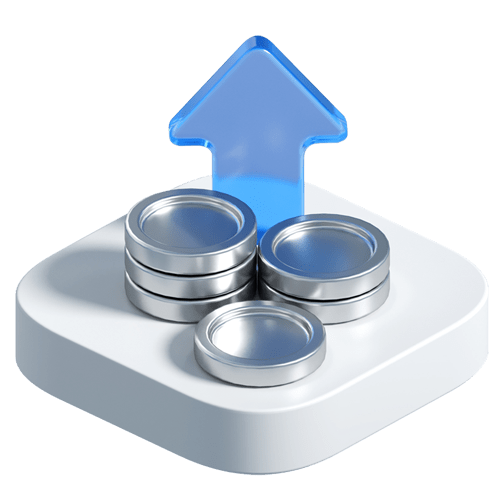Making the jump from demo to live CFD trading is exciting and a little nerve-wracking. You have spent hours practicing, testing strategies, and getting comfortable with market movements. But trading real money is a whole different story. It is where emotions kick in, discipline gets tested, and every decision counts.
Before diving in, you need to slow down and prepare properly. Think of this as your pre-launch checklist; the Forex trading steps that bridge the gap between theory and real-world action. It is about understanding how leverage works, managing your risk, and keeping your cool when the market swings against you.
So, before you risk your hard-earned cash, make sure you have covered all the essentials. From fine-tuning your strategy to choosing a reliable broker, every step matters. Let’s walk through five critical steps that can make your transition smooth, smart, and stress-free.
Demo vs Live Trading
Let’s break down the key differences between the two and why your mindset needs to shift before you trade for real.
Emotions Hit Harder
In demo trading, it is all numbers on a screen. You win or lose, and it does not sting. But once real cash is on the line, fear and greed take over. Suddenly, you second-guess your plan or chase losses you would normally ignore. This emotional shift is what makes live trading so challenging.
Risk Feels Real
On a demo account, you can take risks freely. If a trade fails, you reset and try again. In live trading, every move affects your balance. You start to weigh every entry, every stop-loss, and every pip more carefully. This sense of accountability sharpens your focus.
Execution Can Differ
Demo platforms often give you perfect trade execution. No slippage, no delays. In live markets, things move fast, and prices can shift in seconds. You might enter a trade expecting one price and get another. Learning to manage these small differences helps you stay realistic about results and adapt faster to real market conditions.
Psychology Changes Everything
Trading without real risk builds confidence. But that confidence can crack the moment you start losing real money. You may hesitate to enter trades or close them too early out of fear. Building mental toughness takes time and exposure.
Results Feel Different
A big win on a demo is exciting. But a real win hits differently. It feels earned, and that satisfaction can push you to trade smarter. The same goes for losses. They teach valuable lessons you cannot learn in a risk-free environment. That is why the best traders see demo trading as practice, not proof of success.
5 Critical Steps Before You Trade Real Money with CFDs
Many traders jump from demo accounts to live CFD trading too quickly. The transition may look simple, but the real market tests your discipline, psychology, and strategy in new ways. Here is how to prepare before you put real money on the line.
1. Master Your Trading Strategy
Your trading strategy is your foundation. Without a solid plan, you are just guessing. The demo phase is your training ground; the place to make mistakes, learn, and improve without losing money. Do not rush through it. Treat it like real trading, because the habits you build here will follow you into the live market.
Refine on Demo: Take your time. Test your setup in different market conditions: trending, ranging, and volatile. Build confidence through repetition until your approach feels second nature.
Track Your Results: Keep a detailed trading journal. Record your entries, exits, and reasoning behind every move. Over time, you will see patterns; what works and what does not. This reflection helps you fine-tune your edge.
Set Clear Rules: Before placing any trade, know your stop-loss, take-profit, and position size. No exceptions. Rules remove hesitation and emotion, allowing you to trade with clarity and control.
Aim for Consistency, Not Perfection: Perfection does not exist in trading. Losses will happen, and that is okay. What matters is consistency over time. Focus on executing your plan accurately, not chasing every win.
2. Understand Leverage and Margin
Leverage allows you to control larger positions with smaller capital, but it can wipe you out just as quickly. Many new traders underestimate how dangerous it can be when emotions take over. Before you go live, take time to fully understand how leverage and margin really work.
Respect the Multiplier: Leverage is not free money. It is borrowed capital from your broker that increases both your profit potential and your risk. A small move in price can double your gains or your losses. Always check your broker’s margin requirements and understand how much of your balance is tied up in each trade.
Practice Risk Control: A leverage ratio of 1:5 or 1:10 is plenty when you are learning. The goal is not to get rich fast; it is to survive long enough to improve. Set strict stop losses and never risk more than a tiny fraction of your account on one position.
Know Margin Calls: A margin call happens when your balance gets too low to keep trades open. Your broker may warn you or close positions to stop bigger losses. Check your margin often and keep extra funds as a buffer. Stay alert; it is easier to prevent a margin call than to recover from one.
3. Develop Emotional Control
Emotions can make or break a trader. When you start trading with real money, the pressure feels completely different. Fear of losing and greed for quick profits can cloud your judgment fast. That is why emotional control is one of the most important Forex trading steps before going live.
Expect Real Pressure: Live trading tests your nerves. Watching real money move up and down triggers fear, greed, and impatience. You might close trades too early or hold losing ones too long. Accept that emotions are part of the process, but do not let them control you.
Start Small: Begin with a small deposit. It helps you ease into the emotional side of trading without too much stress. You will still feel the pressure, but it will not be overwhelming. As you grow confident, you can increase your capital gradually.
Follow the Plan: Stick to your trading plan no matter what happens. If your rules say exit, you exit, no hesitation. Following your plan keeps emotions in check and decisions consistent. In the long run, control and patience bring better results than gut feelings ever will.
4. Build a Risk Management Framework
Risk management is your safety net in trading. Even the best strategy can fail without it. The goal is not just to make profits; it is to protect your capital so you can trade another day.
Limit Losses: Never risk too much on one trade. This way, a few bad trades won’t wipe you out. Think of it as paying a small “entry fee” to stay in the game longer. Protecting your balance matters more than chasing big wins.
Diversify: Do not put all your trades into one asset or market. Spread your risk across different instruments: forex pairs, commodities, or indices. This helps balance out potential losses. When one market struggles, another might perform better. Diversification keeps your account stable and less dependent on one outcome.
Use Protective Tools: Always set a stop-loss before entering a trade. It limits how much you can lose if the market turns. The simple tools save traders from emotional decisions and protect gains automatically.
5. Choose a Reliable Broker and Platform
Your broker is your gateway to the market, so choosing the right one is crucial. A good broker gives you fair prices, fast execution, and peace of mind. A bad one can cost you money and trust. Before you go live, take time to research and test your options.
Regulation First: Always go for a regulated broker. Look for licenses from authorities like the FCA or FSCA. Unregulated brokers might promise big bonuses, but they come with big risks. Trust and transparency should always come first.
Check Fees and Spreads: Hidden fees can quietly eat into your profits. Review the broker’s spreads, commissions, and withdrawal charges before signing up. Some brokers offer tight spreads but add costs elsewhere. Compare a few options and pick one with clear, fair pricing.
Platform Comfort: Your platform is where you will live as a trader. Make sure it runs smoothly, executes orders quickly, and offers tools you actually use, like charts, indicators, and mobile access. A reliable, easy-to-navigate platform keeps you focused on strategy, not tech issues.
Why Most Traders Fail the Transition
Many traders perform brilliantly on demo accounts but lose money as soon as they go live. Have a deeper look at where this transition goes wrong.
Emotions Take Control
Once real money is involved, fear and greed hit hard. Traders start reacting instead of planning. They close trades too early or hold losses too long.
Overconfidence After Demo Wins
Success in demo trading can create a false sense of mastery. Live markets add pressure and unpredictability that demo accounts cannot replicate. Overconfidence often leads to careless decisions.
Ignoring Risk Management
Using high leverage or risking too much per trade can quickly drain an account. Smart risk limits are the key to survival.
Lack of a Solid Plan
Jumping into live trading without a clear strategy is a recipe for chaos. Every trade should have a reason, a goal, and an exit plan.
Conclusion
Moving from demo to live CFD trading is a big step; one that tests your skills, discipline, and mindset. Master your strategy, manage your risk, and keep emotions in check. Start small, stay consistent, and treat every trade as a lesson. With patience and the right habits, you will build the confidence to trade real money wisely and sustainably.
Explore more of our articles for practical trading tips and strategies: How to Create a Winning Trading Plan in 5 Easy Steps.





